When it comes to Meta advertising, less is more. Keep it simple. Far too often, overcomplicating your campaigns is costing you money.
Yes, there are exceptions. Especially if you have big budgets, you have the room to make your campaigns more complex. But even in the cases of big budgets, there are examples of advertisers who are hurting their results by trying to do too much.
It wasn’t always this way. The algorithm wasn’t smart enough to trust it years ago. Not only is it smarter, but the entire structure is set up for you to do less.
Don’t fight it.
Stop Overthinking Optimization
What is the action you want? Optimize for that.
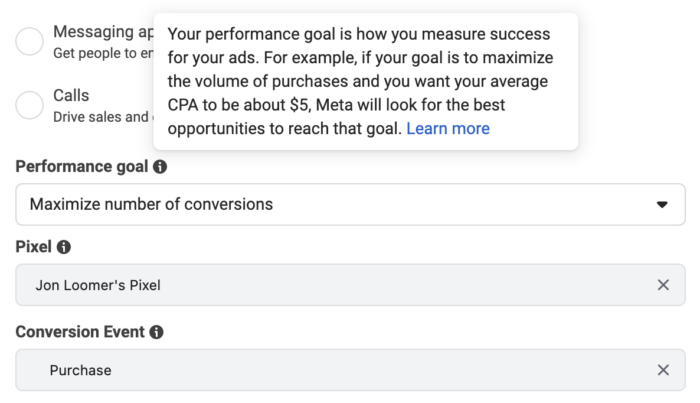
Too simple? Sometimes. I get there are times when you can’t get enough conversion events to help the algorithm learn. But more often than not, the inability to exit the learning phase shouldn’t prevent you from optimizing for the action that you want.
Yes, you can get better results when you’re able to generate more volume. But far too often, we make assumptions about how people behave. We assume that if we optimize for Add to Cart, Initiate Checkout, or View Content that we’ll get the volume we need. And we assume that the typical percentage of those people will end up completing the purchase.
Unfortunately, people are weird. You can’t count on ad traffic to result in a typical conversion rate if it’s not optimized for a purchase.
Tell the algorithm what you want.
Stop Wasting Time with Targeting
Which lookalike audience works best? Which interest and behavior? You test and test and test, looking for the best combination.
This just isn’t all that necessary these days.
It’s not that interests and lookalikes are worthless. There are certainly fewer interests than there once were. But the algorithm no longer uses the audiences you select as a hard constraint when optimizing for a conversion.
When you pick that lookalike audience, Meta turns on Advantage Lookalikes by default, giving the algorithm the ability to expand the percentage.
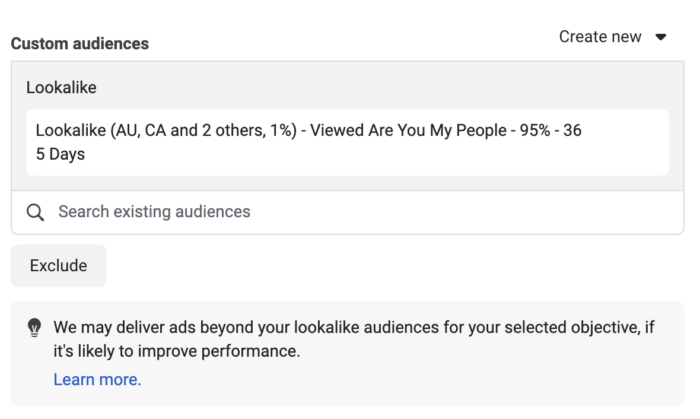
When you pick that group of interests, Meta turns on Advantage Detailed Targeting and can expand beyond that group as well.
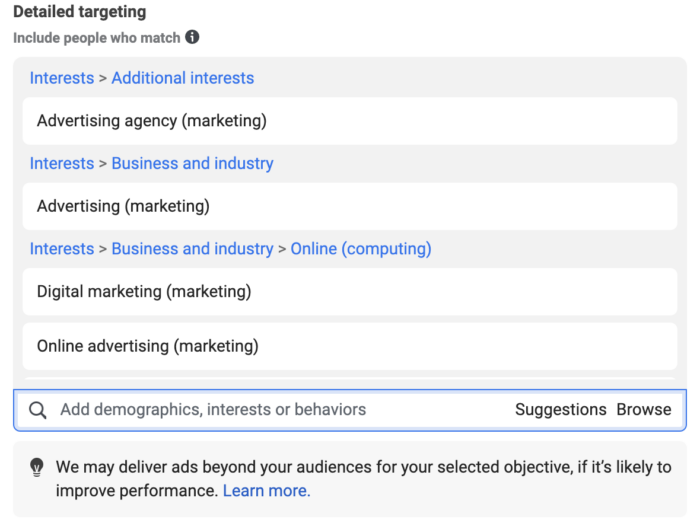
These interests and lookalikes are mere suggestions these days. So stop feeling like what you use needs to be perfect.
In fact, you may be better off without those interests and lookalikes anyway. Try removing them and go completely broad. You may be surprised by the results that you get.
The expansion products are evidence that Meta wants you to go broader. In some cases, you should. It’s possible that you’ll get the same or better results by keeping it simple instead of overthinking your targeting.
Stop Messing with Placements
You think some placements don’t work. So what? The algorithm will adjust.
This sounded like nonsense not long ago. But when you’re optimizing for a conversion, it’s almost always better to roll with Advantage+ Placements. The algorithm will then optimize distribution to consider costs and who is most likely to act on a given placement.

You can’t do this nearly as well as the algorithm can. Stop trying to out-think it.
There are a few exceptions, of course, and they’re related to many of the top-of-the-funnel actions. If you optimize for link clicks or landing page views, the algorithm can be fooled by low-quality traffic from Audience Network. And if you optimize for a ThruPlay, the same thing can happen with Rewarded Video.
But the thing is, you kinda get what you pay for when you optimize for those actions. Quality is rarely good. Optimize for conversions (some kind of conversion) when you can.
And when you do, allow the algorithm the option of all placements.
Limit the Ad Variations
You create a bunch of ad options with different copy and creative combinations. While some ad options can help limit fatigue, you can also water down your results to the point that they don’t mean much. Or the algorithm will simply run with one or two anyway, and it’s all a waste of effort.
Next thing you know, you’re pausing and starting ads, forcing Meta to show the ads you want. Stop doing this.
If you have a big budget, sure. You can create a bunch of options. You have the time and resources, knock yourself out.
But otherwise, it’s rarely necessary. You aren’t sure what the copy should say? Utilize the multiple text options feature.
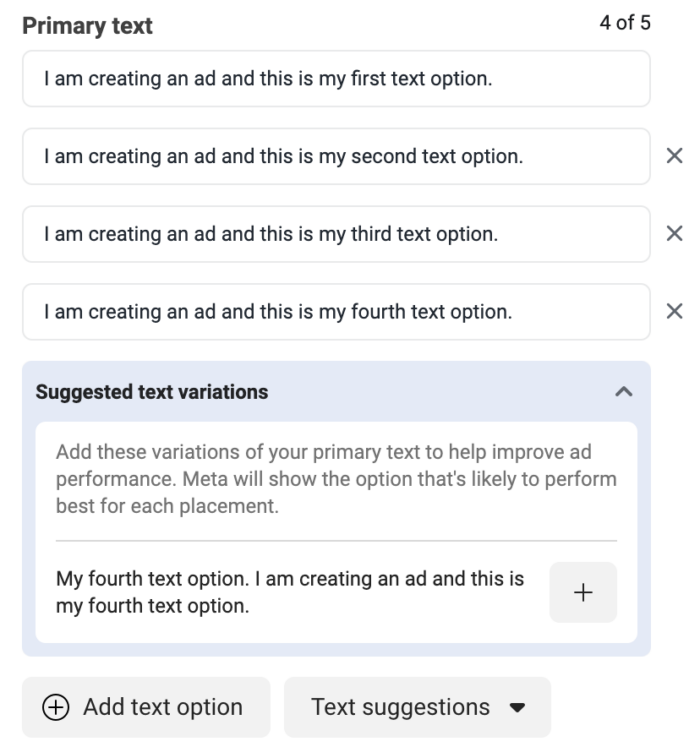
Turn on Standard Enhancements and Advantage+ Creative.
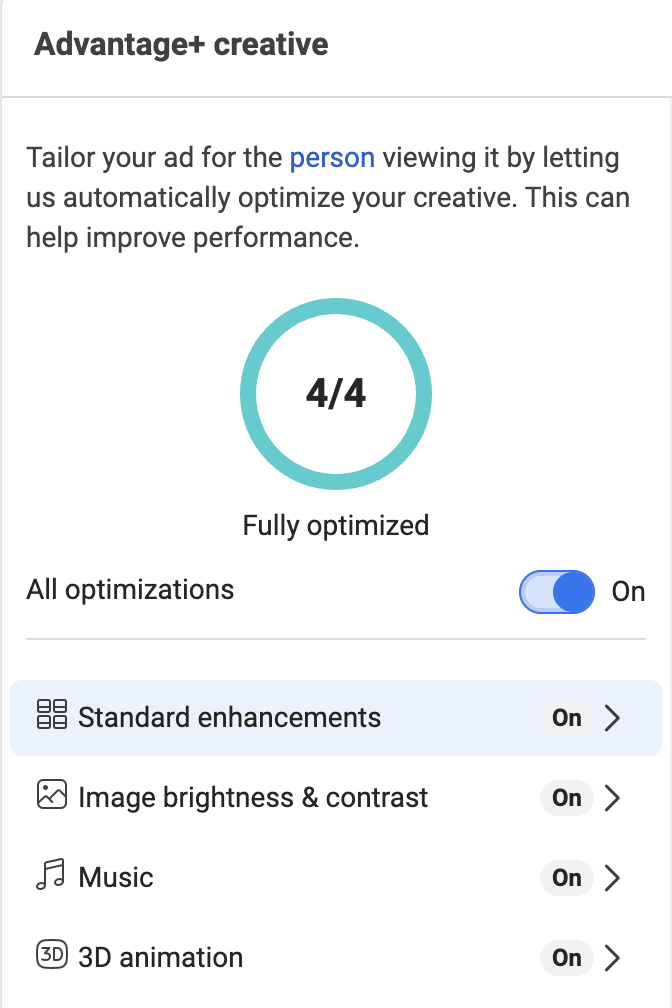
There’s a lot you can do with copy and creative without putting out a bunch of ads.
Limit the Ad Sets
You were probably creating multiple ad sets to test different audiences. As discussed earlier, it’s rarely all that necessary, at least when creating multiple ad sets for similar audiences (different lookalikes or interests, for example). This might result in audience fragmentation.
It’s okay to have multiple ad sets for cold and warm (remarketing), but we’re seeing that even your broad remarketing audiences are often reached when targeting broadly.
Once again, big budgets have more flexibility here. But, in most cases, keep it to the one ad set.
Campaign Focus
I’m not going to tell you to limit yourself to a single campaign. That’s craziness. We want simplicity, but that level of minimalism is taking this too far.
Create multiple campaigns to satisfy your different business goals. So, it could be something like…
- Campaign #1: Top of the funnel (video views, engagement, traffic, awareness)
- Campaign #2: Lead building
- Campaign #3: Purchases
You may need different campaigns for different products and goals. So even suggesting you should have only three isn’t necessarily realistic. I often have upwards of 10 campaigns at once, it’s not easy to avoid it.
Just keep in mind that if you find yourself targeting the same groups in multiple ad sets, you could be creating an Auction Overlap situation for yourself.
There are Always Exceptions
I realize that the idea of simplifying your approach will always have exceptions. If you found yourself shaking your head at anything here, it’s possible that an exception applies in your case.
The main thing is that too much complexity can create problems for the algorithm. Rarely try to outsmart it. Rarely limit it. Don’t create too many options that could result in Auction Overlap or Audience Fragmentation. Where that line is drawn will vary and is for you to figure out.
Bottom line: Stop overthinking this stuff. Keep it simple.
Watch Video
I recorded a video about this, too. Check it out below…
Your Turn
What’s been your experience?
Let me know in the comments below!






